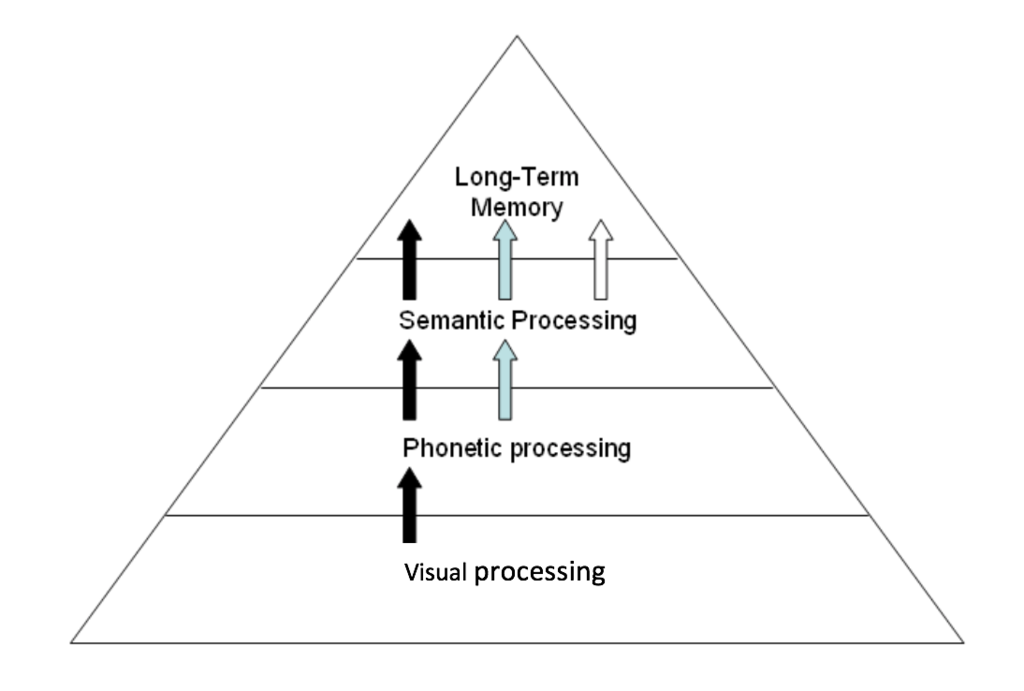Original Study
Craik and Lockhart’s Levels of Processing Model
By: Ariel Birkholtz

In 1972 Craik and Lockhart work on an idea of memory for how people encode information. Prior models for how we encode information looked at it through a storage and transfer model, with multiple different methods of storage and transfer depending on the type of information. These storage models are different in the ways information is retained. Craik and Lockhart, in their article, are reviewing the reasons for multistore models, their adequacy, and alternative forms in the way of levels of processing. The purpose of their article is that the depth of analysis of the stimulus affects memory, looking at a theory called Levels of Processing, or Depth of Processing. From the development of Broadbent’s theory of memory. This stated that information must be brief and held short-term until it moves to permanent long-term storage. This idea was further developed by multiple others into what was known as the Modal Model as it is widely accepted. There are three levels of storage in this system, including sensory stores, short-term memory (STM), and long-term memory (LTM). STM has a limited capacity (7±2) with a forgetting time of 30 seconds or less, and codes mostly verbal information while LTM has no known capacity, a forgetting that comes very slowly or not at all, and codes mostly semantic information. An important idea for the storage of memory was the idea that there are forgetting characteristics. The idea of the multistore model was not accepted by all because of the passage of information from one storage area to the next. The idea of levels of processing was developed, looking at the perception of the stimulus as to how it has been encoded. The depth at which a stimulus is processed determines how likely the memory is to be retained. In studying the idea of the depth of processing, it was found that memory, or learning, of information, is affected by depth in orienting tasks under incidental conditions. These include the ideas of free recall, serial position/recall, repetition, and rehearsal. The free recall includes participants being given a list of items and told to study and then to recall the listed items in any order. The serial position effect is where people are more likely to recall the first or last items listed, but less likely to recall items from the middle of a list. Repetition and rehearsal are the practices of memorizing information by reviewing it multiple times. These are not effective ways to memorize information as it is only encoded at the sensory level, leading to no improvement in memory. It is not known whether rehearsal strengthens the trace of memory or if it postpones forgetting, but it is known that only a deeper level of processing leads to memory improvement.
